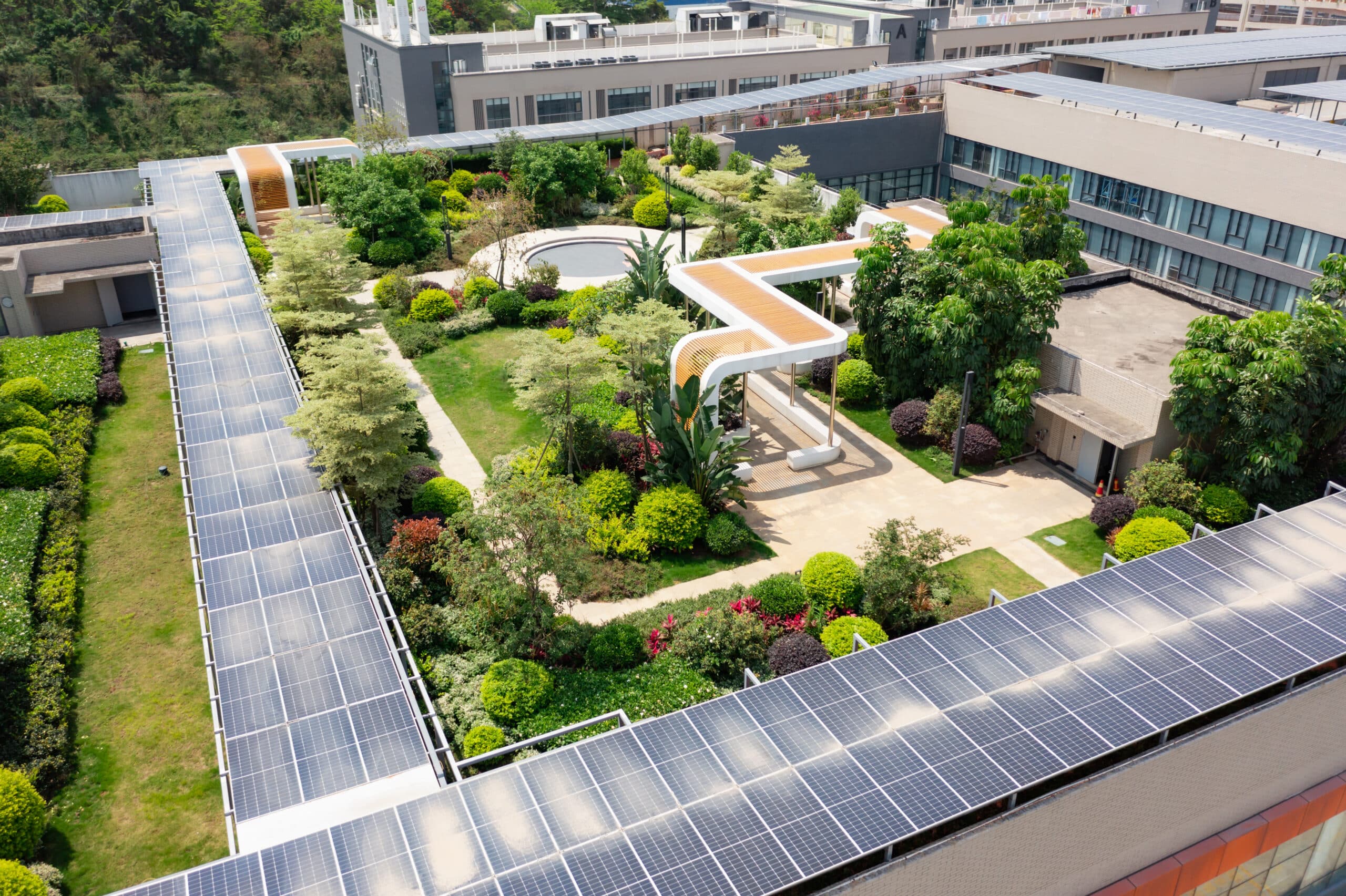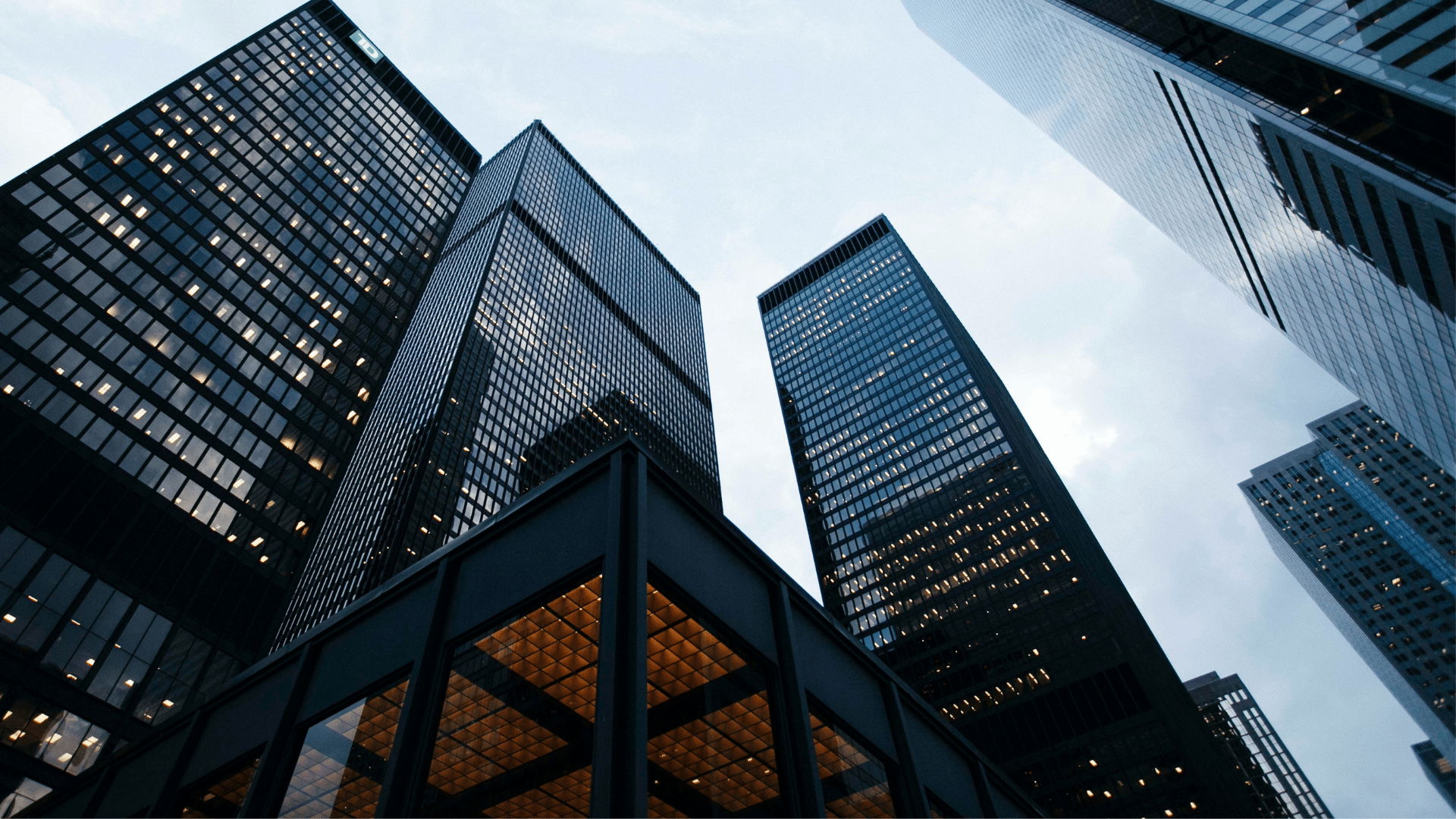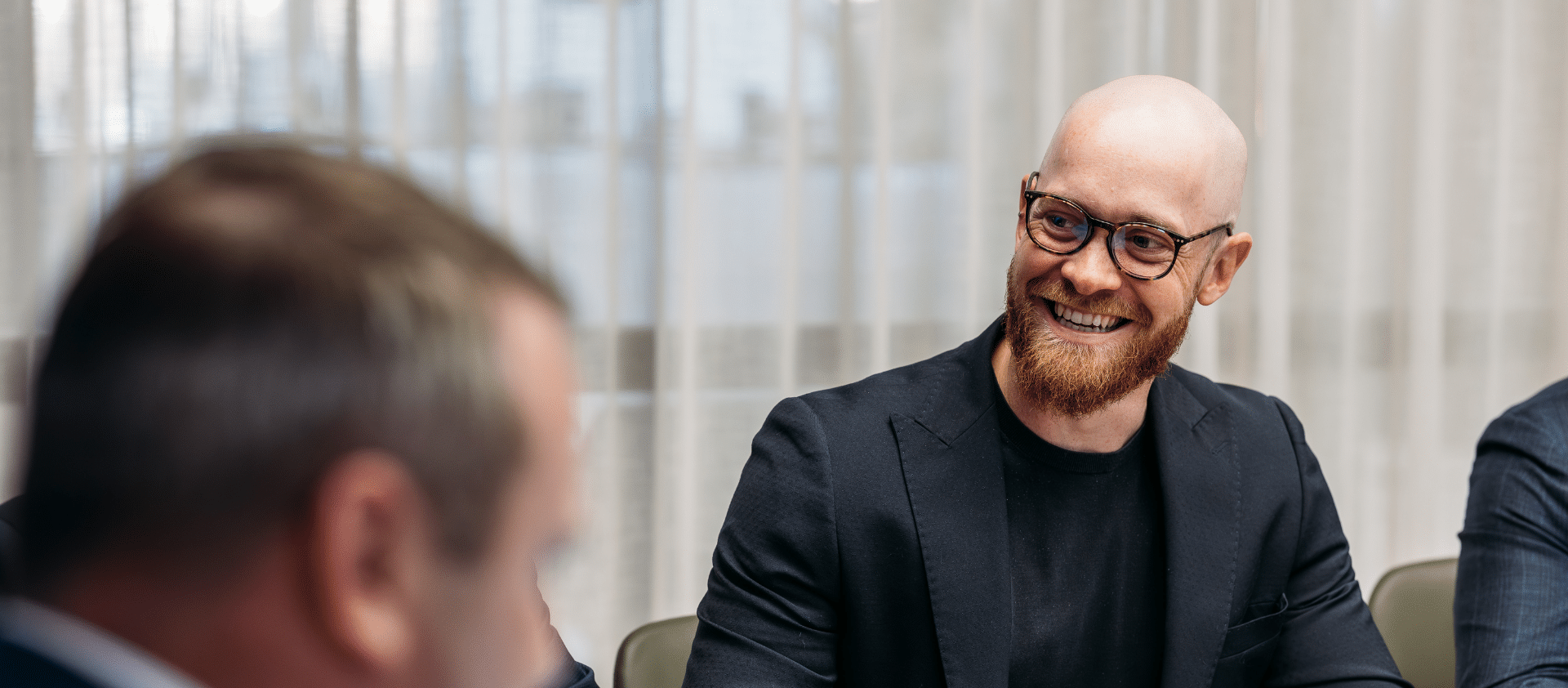
As our cities continue to expand to accommodate our growing population, green spaces are gaining recognition as a crucial aspect of sustainable workplace design.
From increased pollution, higher energy consumption, health concerns and diminished biodiversity, there is an increasing need for innovative solutions that can offset the detrimental effects of rapid urbanisation.
What are green roofs?
One concept that has the potential to transform the development of urban areas for the better, is the green roof. Also known as ‘living roofs,’ green roofs consist of a layer of vegetation and planting systems on the rooftop of a building, which is designed to support renewable energy generation and water collection technology.
By combining architectural excellence with eco-conscious practices, these rooftops can be incorporated into workplace design to deliver long-term value for businesses, their people and surrounding ecosystems.
Keep reading to discover the impact that green roofs are having on workplace design and how projects like Daramu House are setting a new benchmark for sustainability.
How do they work?
Green roofs have a series of components that help to either protect the building, promote the growth of vegetation, collect rainwater or generate energy. These components provide an added layer of thermal insulation that works to increase the lifespan of the building, conserve energy, mitigate stormwater runoff and promote biodiversity.
As such, green roofs have emerged as a powerful tool to reduce the environmental impact of commercial buildings. Daramu House in Barangaroo, Sydney, beautifully exemplifies this concept of integrating green spaces and renewable energy systems into urban rooftops. Its expansive rooftop garden was purposefully designed to promote biodiversity, improve air quality and reduce the building’s overall ecological footprint.
So, what are the advantages?
Environmental & Economic
By integrating renewable energy systems, green roofs have the potential to dramatically improve the energy efficiency of the building, which can result in huge fiscal advantages for businesses.
As shown in Daramu House, solar panels can be incorporated into the rooftop design to provide an on-site source of renewable energy. This clean energy can be used to reduce the building’s reliance on conventional energy sources and help to offset their total energy load. These energy savings also result in significant cost savings and long-term financial viability for businesses.
Similarly, the layer of vegetation on a green roof provides excellent insulation to the building, helping to regulate the internal temperature of the building and reduce the reliance on costly climate control systems. By maximising the use of available space to generate and save on energy, sustainable urban roofs can help facilitate the transition to a greener and more self-sufficient workplace model.
Health & Productivity
Incorporating a sustainable rooftop garden into your office fit out offers a unique opportunity to create an inviting and inspiring green space that enhances the work environment.
Access to green spaces is well known for having a positive impact on employee wellbeing and productivity. By providing ample access to natural light, fresh air and outdoor space, a green roof can help to create a healthier and more inspiring workplace.
Social spaces play a similar role in boosting employee collaboration and creativity within the workplace. Green roofs designed with alternative spaces for meetings as well as social interactions can act as a catalyst for collaboration and provide a refreshing change from the traditional office setting.
Looking to the future
Visionary projects like Daramu House demonstrate the environmental feasibility of sustainable practices and serve inspiring examples of sustainable design that is setting a new standard for the future of work. By showcasing the successful integration of sustainability, aesthetics and functionality, these projects should encourage the adoption of eco-conscious design principles worldwide.
With their ability to reduce environmental impact, enhance energy efficiency, improve employee well-being and foster collaboration, green roofs showcase the power of innovative design to create harmonious spaces that promote sustainability, productivity and employee wellbeing.


